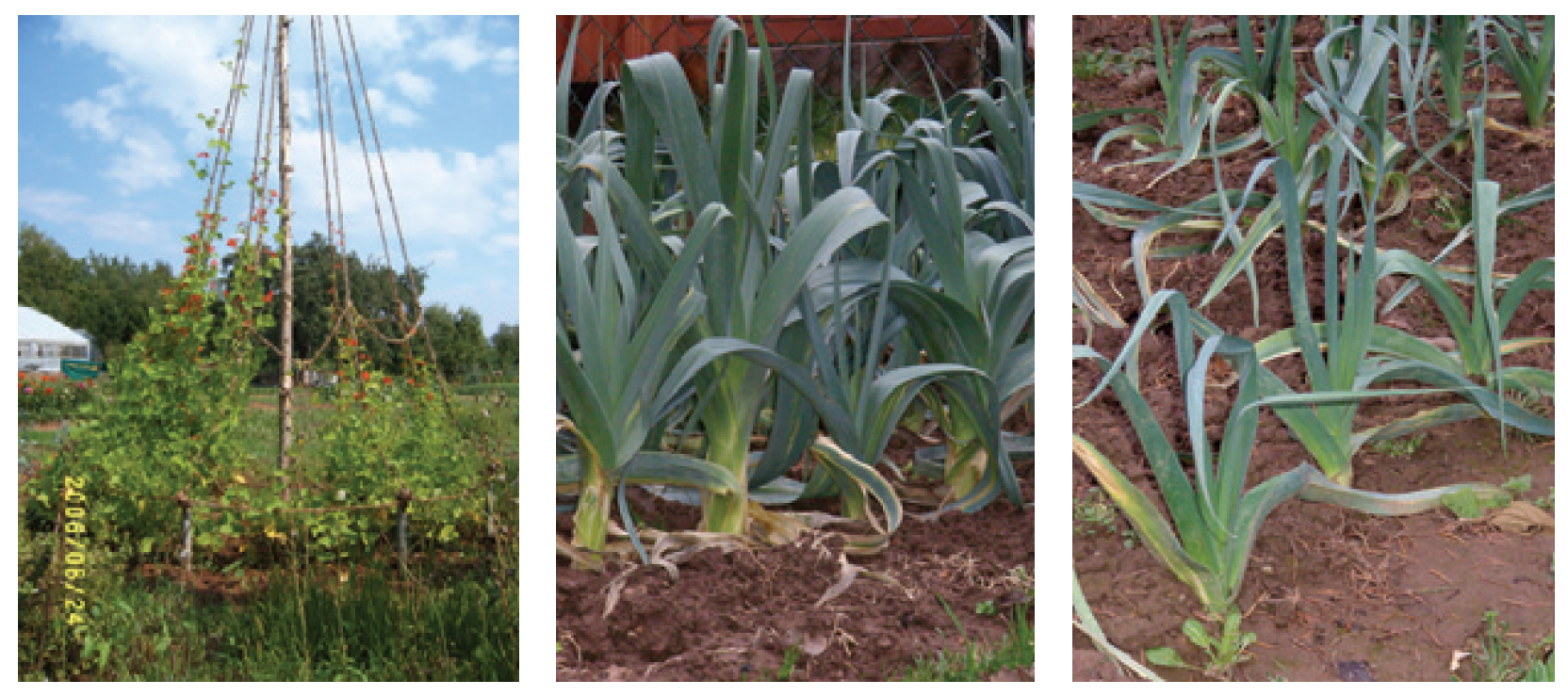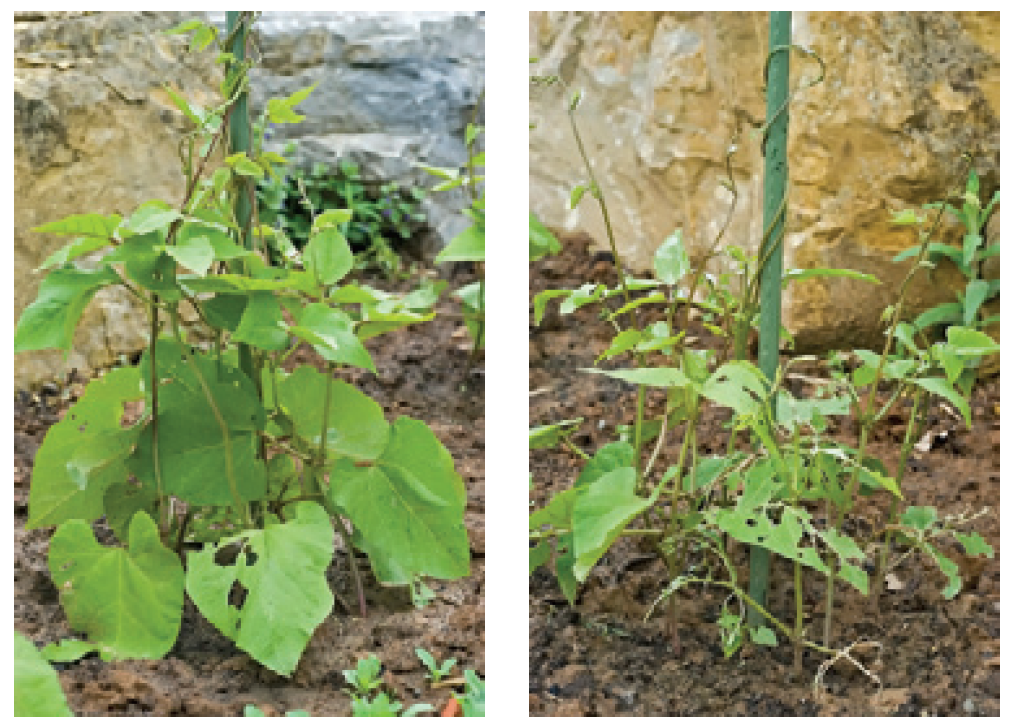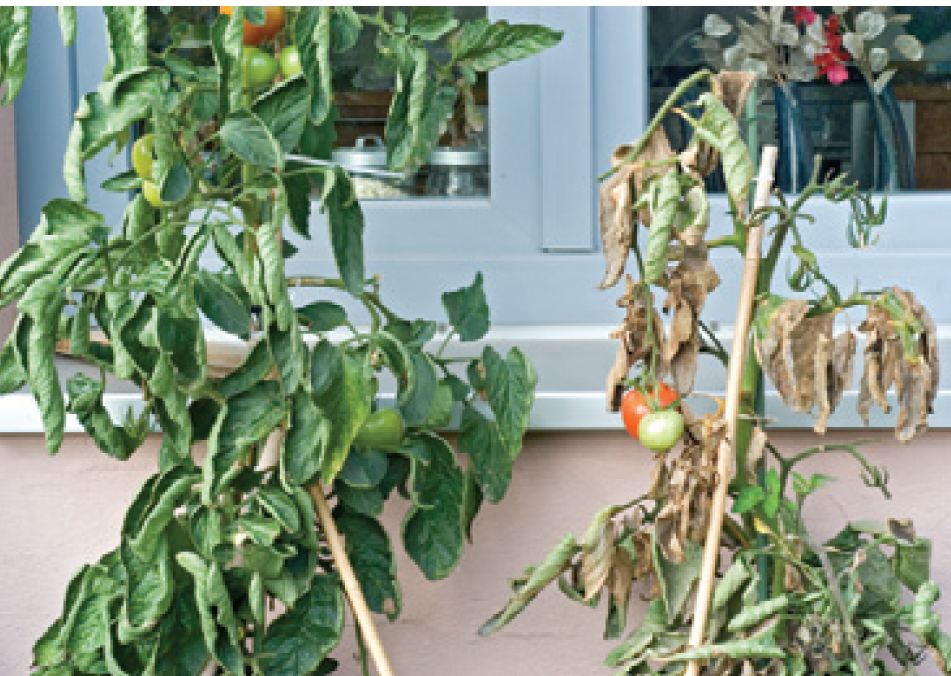Observation of Use
In the past few years, the following general observations have been made with regard to various types of vegetable after treatment with Lithovit®:
- Higher yields and enhanced quality
- Reduced slug damage
- A longer period of growth
Higher Yields
Both with leeks (Allium porrum “Elefantenfuss”) and with scarlet runner beans (Phaseolus coccineus), the use of Lithovit® led to substantially improved results.
Left-hand picture: scarlet runner beans; those to the left of the pole treated with Lithovit®, those to the right not. Centre picture: leeks treated with Lithovit®. Right-hand picture: untreated leeks. In both cases, the positive effect of the use of Lithovit® is clearly apparent: it both accelerates growth and leads to a substantially better harvest.
Reduced Slug Damage
In some cases, the use of Lithovit® thickens the walls of a plant’s cells and so makes the leaves tougher. In the case of the scarlet runner bean (Phaseolus coccineus), this led to substantially less slug damage in the plants treated with Lithovit® in 2006.
On the left, the scarlet runner beans treated with Lithovit®, on the right, the untreated plants. In the right-hand picture heavy slug damage is clearly visible, some individual leaves being reduced to skeletons; whereas in the left-hand picture slug damage is present only here and there.
Longer Period of Growth
Thanks to the substantial increase in vitality resulting from the use of Lithovit®, the period during which fruit goes on ripening is considerably extended in some species. In 2006, for example, tomatoes continued to be harvested from a trial planting until the first frosts in early November.
On the left, the plants treated with Lithovit®, on the right untreated plants (photos taken in late September). The left-hand plant retained its full vitality until the first-night frosts in November.
Recommendations For Use
Lithovit® is generally applied to vegetables in a concentration of 0.3 % to 0.5 % (representing 1 kg Lithovit® per 300 l to 200 l water); as a rule, 1.5 kg per hectare is required. The last application should be not later than around two weeks before harvesting (note: later applications are generally not harmful, but the time is too short for them to be properly effective).
Lithovit® can be mixed with customary plant protection agents, to the extent that these are not applied in the form of an acid solution. Since not all chance occurrences that may arise in practice are predictable, users are recommended to test a trial mixture first.
Plant Propagation
It may make sense to apply Lithovit® once or twice in order to strengthen the young plants. At least one application should be effected around 5 days before planting out, in order to increase stress tolerance.
Cabbage, Red Cabbage, Chinese Leaves, etc.
Two to three applications; the first either directly after planting out or, where plants are grown from seed, at the time of the first tending (approx. 2 to 3 weeks after sowing). Second and third applications at intervals of approx. 2 to 3 weeks, depending on the cultivation time.
Leeks, Onions, Garlic, Celery, Carrots
Three to five applications, the first at the time of planting out at the latest, thereafter at intervals of 14 to 21 days spread over the cultivation period.
Dwarf Beans, Kidney Beans, Scarlet Runner Beans, Peas, etc.
Three to five applications, starting from the appearance of the second leaf, thereafter at intervals of 3 to 4 weeks spread out over the cultivation period.
Tomatoes, Cucumbers
Three to five applications at intervals of approx. 21 days spread out over the cultivation period, the first on the appearance of the second leaf, or in any case not later than planting out.



